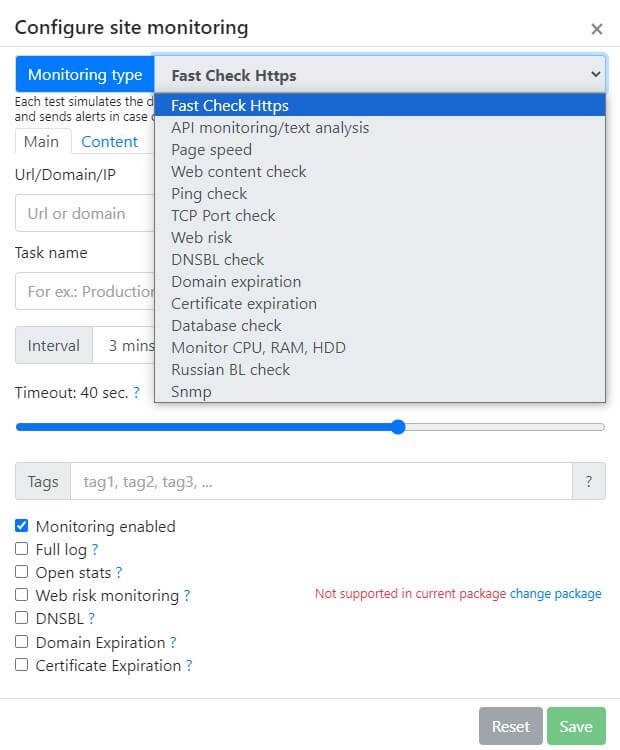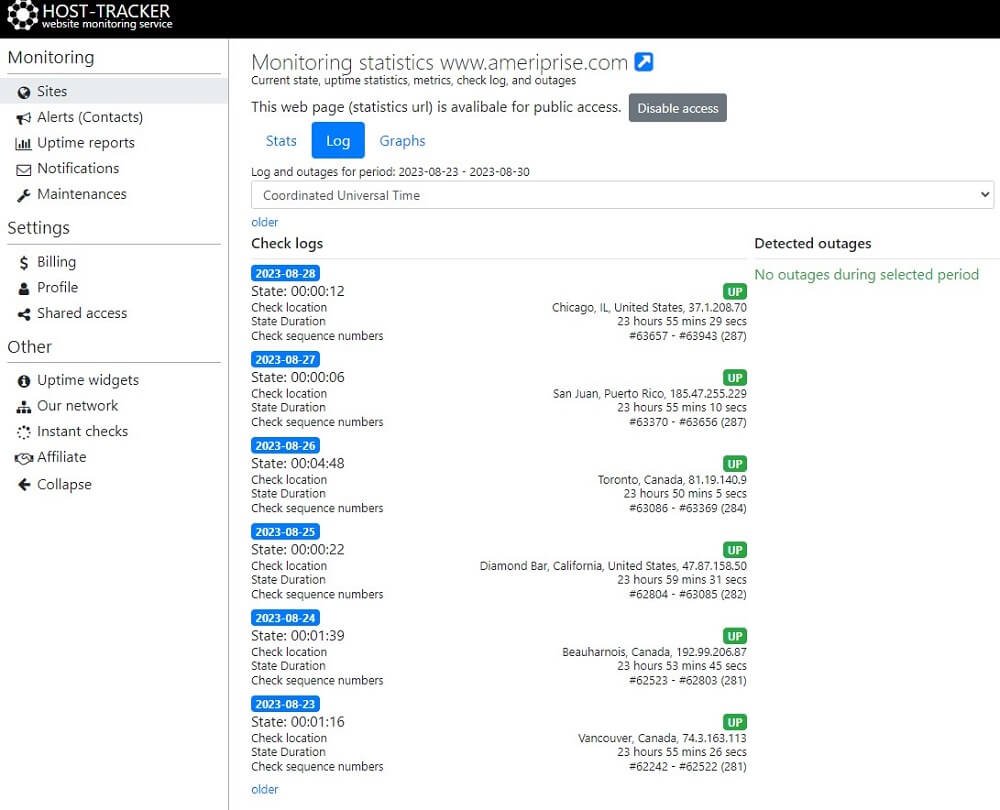Websites are an integral part of our daily life – people literally can’t browse the Internet without visiting them. And websites work as intended and promoted at a good pace among the audience and search engines only when they are functioning properly. And ‘properly’ means always accessible, fast and well-performing. To achieve that all, it is vital to understand why website performance matters and how to keep it high. But, sadly, almost all novice website owners and webmasters are lacking in that understanding.
Website performance, simply put, is an overall metric that includes its response, loading speed. functionality and more related metrics. A slowly working and badly performing website will annoy users all the same as if it was entirely inaccessible to them. Moreover, search engines will consider it untrustworthy and lower its ratings in SERP (search engine result page) queues. Therefore, it is highly important to maintain your website’s performance in its topmost condition.
How to Test the Performance of a Website
Website performance is not a single metric – it’s a complex set of parameters that are measured by a variety of checks and tests. And the most basic way of testing the website’s performance is to use Google tools. Precisely because they show where your website is lacking. But those tools are not showing particular numbers and only give practical advice without stating what could hinder the website’s performance if it’s not in the perfect state.
Therefore, if you want to thoroughly test the website’s performance and get the actual numbers and statistics, you need a powerful monitoring toolkit like odown, full of real-time checks and tests. For instance, you could use the HostTracker platform to determine your website’s performance based on the provided results. Its tests are precise and accurate and are available to all Internet users, albeit without full automation for unregistered visitors.
All the data you could get with HostTracker tools will be shown in an easy-to-understand manner that is suitable even for novices. It will be possible to find out what affects the website’s performance in a bad way and fix all possible issues. And if you are a registered HostTracker user and set up a real-time monitoring routine, you will get the best method to keep your website’s performance in check.

What Is Website Loading Speed?
Considering that the website’s performance is a complex set of metrics, its loading speed is one of the most important things to look into when checking everything. Speaking in simple terms, loading speed is the speed with which the website loads fully for users, with all of its content and functionality completely accessible for users and working without issues. It includes everything from server response time, databases, content and functionality loading and up to third-party services loading.
So, strictly speaking, the website’s speed is the core metric of its performance. If the server is not working properly – the website’s speed will become slow or it will become completely inaccessible. It’s all the same if databases start working slow. On the other hand, if the website’s content is too heavyweight, it will become an annoyance to users in addition to overall slowdown. And if functionality is not working, webpage code is unoptimized and so on, it will render the website unusable for its audience.
Even if you don’t plan to measure all the above metrics separately, you should at least check the overall speed metric with https://www.host-tracker.com/en/ic/page-speed-test at HostTracker platform to determine how quickly your website works. You can either run it manually if you didn’t set up a full-scale automated monitoring and need to check the pagespeed quickly, or you can sign up and make the HostTracker system check it regularly to avoid possible problems in the future. Especially taking into account that, when properly set up, this system will notify you instantly if something happens with the website’s loading speed.

What Is Website Server Speed?
Server response and loading speed is another part of the website’s performance, although it is actually included in its overall loading speed metric. It is better to keep the server status in check separately, because sometimes there are serious server-side issues that affect the website’s performance. And usually those issues slow down everything else no matter what you do to optimize the website’s speed on your end.
In simple words, server speed measures how quickly the aforementioned server responds to the user’s actions and how well it performs. Considering that server-side issues are almost always managed by the hosting provider, it is also vital to keep it in check in case of emergencies. It will be of huge help and will allow you to quickly determine whether there are server-side issues slowing down everything or the website itself is not working properly.
Whenever you need to quickly test your server’s speed, you can use quick check server status on HostTracker platform to be sure that there’s nothing wrong with it and you need to fix the website to increase its performance. But it will be much more useful if you set up a proper monitoring routine with the HostTracker automated toolkit. Because this way you will know about server-side issues instantly as soon as they arise. Therefore, you will be able to precisely ask the hosting provider about them.

What Is Uptime for Your Website?
Website’s uptime, despite not being directly related to its loading speed and performance, is a vital part of the website’s reliability assessment routine. Basically, uptime is the measurement of the time when the website was online and accessible to its audience. It is always shown in percentage and the higher it is – the better. And although 100% uptime is practically and realistically impossible due to planned website update downtimes and server maintenance downtimes, every webmaster and website owner strives to achieve at least 99.99% uptime.
Taking all that into account, it is vitally important to monitor the website’s uptime and check its downtime to keep the website on top of SERP (search engine results page) queues. Therefore, you should use the check site availability service host-tracker provides to constantly monitor your website.
Otherwise your website’s uptime and performance, as well as SERP ratings, will be at huge risk of becoming lower than they should be. And HostTrakcer automated monitoring will help you with avoiding it by notifying you about all occurring issues that will affect the website’s uptime.
How Often Should You Monitor Website Performance
Taking into account everything that was said above, you should monitor website’s performance, server’s working speed and their uptime as frequently as it is possible without creating an excess of user-server requests during checks and tests. As the HostTracker platform’s system states and allows, the lowest interval between checks should be at least 1 minute or higher.
With this aforementioned interval between automated checks you will get the required amount of monitoring, will keep your website under constant watch and will be able to react as quickly as possible if some issue occurs. The latter is thanks to the already mentioned instant notifications system that will send the message as soon as something happens to the person responsible for fixing issues.
This way it will be relatively easy to keep your website’s performance in its topmost state and its uptime in its highest percentage. And if you achieve that with the HostTracker platform, you will be able to promote and develop your website freely without the need to look at monitoring routines yourself. Because it will deal with everything related to monitoring in your stead.
Final Words
Considering everything that was mentioned before, it is as vital to understand the concept of the website performance as it is vital to understand the need in the website’s monitoring. Firstly, because you won’t be able to maintain the website’s performance without knowing what is included in this measurement.
Secondly, it will be impossible to fix issues with performance without looking at the website’s metrics. You won’t know where to look for the source of your website’s problems if you won’t look at separate metrics included in the website’s performance measurement.
And, thirdly, it will be useless to fix everything before setting up a proper automated monitoring routine with a powerful toolkit like HostTracker. Because it will be impossible to determine whether you’ve fixed everything or not in the first place. And you need to check everything in the long term to be sure.












